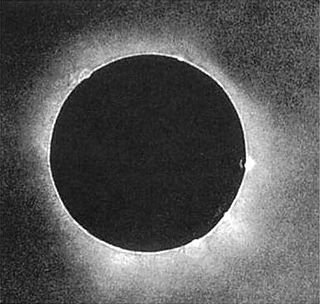| Solar eclipse of July 28, 1851 | |
|---|---|
 Berkowski made this first solar eclipse photograph at the Royal Observatory in Königsberg, Prussia (now Kaliningrad, Russia) | |
| Type of eclipse | |
| Nature | Total |
| Gamma | 0.7644 |
| Magnitude | 1.0577 |
| Maximum eclipse | |
| Duration | 221 s (3 min 41 s) |
| Coordinates | 68°00′N 19°36′W / 68°N 19.6°W |
| Max. width of band | 296 km (184 mi) |
| Times (UTC) | |
| Greatest eclipse | 14:33:42 |
| References | |
| Saros | 143 (14 of 72) |
| Catalog # (SE5000) | 9167 |
A total solar eclipse occurred at the Moon's ascending node of orbit on Monday, July 28, 1851, with a magnitude of 1.0577. A solar eclipse occurs when the Moon passes between Earth and the Sun, thereby totally or partly obscuring the image of the Sun for a viewer on Earth. A total solar eclipse occurs when the Moon's apparent diameter is larger than the Sun's, blocking all direct sunlight, turning day into darkness. Totality occurs in a narrow path across Earth's surface, with the partial solar eclipse visible over a surrounding region thousands of kilometres wide. Occurring about 1.5 days before perigee (on July 30, 1851, at 2:30 UTC), the Moon's apparent diameter was larger.[1]
The path of totality was visible from parts of modern-day Canada, Greenland, Iceland, Norway, Sweden, Denmark, Poland, Russia, southwestern Lithuania, Belarus, Ukraine, Moldova, Georgia, Armenia, and Azerbaijan. A partial solar eclipse was also visible for parts of North America, Europe, North Africa, Russia, the Middle East, and Central Asia.
This was the earliest scientifically useful photograph of a total solar eclipse, made by Julius Berkowski at the Royal Observatory in Königsberg, Prussia. It was the first occasion that an accurate photographic image of a solar eclipse was recorded.
- ^ "Moon Distances for London, United Kingdom, England". timeanddate. Retrieved 17 September 2024.
